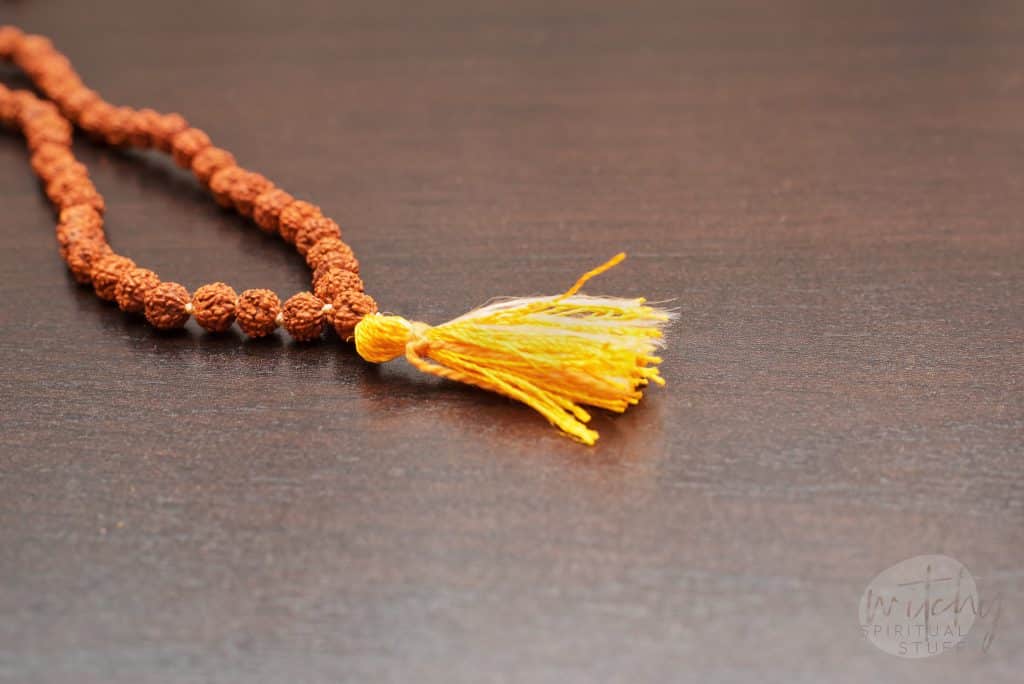How To Create Your Own Personal Mantra of Power
We’ve talked before about how to choose a mantra. If you haven’t already, you can check that out too, because what we’re about to discuss today is something related: how to create a mantra.

Choosing a mantra and creating one for yourself aren’t really that different. You might find that some steps are kind of similar as they share the same purpose — to help you meditate or clear your mind.
Some people might argue that creating your own mantra is more about uplifting your spirits. I totally agree that mantras can offer a lot of positivity in your life.
Because mantras are originally sacred syllables, they’re powerful enough to get you through tough times, but if your mind isn’t clear, how can you even begin to raise your energy to a positive level?
Thus, we go back to the inherent purpose of a mantra — clearing your mind. Then, your body and your emotions will follow.
Table of Contents
Creating Your Mantra
In creating your mantra, there are two things I’d like to emphasize; one is that you can’t rush it.
Depending on your situation, your thought process, and your intuition, this can take days, even weeks! Don’t stress when you feel like it’s taking too long.
Give yourself enough time to really reflect on your personal mantra. After all, it’s going to affect your life, your actions, your mindset, and your feelings in significant ways.

Another important thing to remember is that there’s no “right” or “wrong” mantra. Some people might prefer Sanskrit mantras over their native language like English, or vice versa.
Either way, that’s all right. While it’s great to incorporate Sanskrit mantras, there’s no point in using it if it’s something you’re uncomfortable with.
Keep in mind that you’re creating your own mantra. It has to be deeply personal and meaningful. Focus on yourself and what’s best for you as this will lead you in the right direction.
For those who want to learn how to create a mantra, here are the steps you can take:
1. Write Down Your Thoughts
The first step to clearing your mind is to write down your thoughts.
I recommend keeping a journal because it’s going to help a lot. With a journal or a notebook, you can go back to these thoughts and mull over them as much as you need.
Over time, you’ll see phrases or topics that tend to repeat. By writing down your thoughts, you’re unconsciously revealing a pattern, which will help you create your mantra later on.

One good tip for journal writing is to begin when your mind is fresh.
This can be in the mornings, just before starting your day, or in the evenings before going to bed. For some people, mental clarity happens in the middle of the day.
Whenever you feel like your mind is at its peak, that’s likely the best time to write.
2. Clarify Your Intentions
After a few days or weeks of writing in your journal, take time to go back to your entries.
Are you now seeing the pattern of your inner thoughts? Is there a topic or an emotion that keeps popping up?

Seeing this pattern can help clarify your intentions for the mantra you will create. Often, we can’t define our innermost intentions in just one go.
Some days, we might feel sad; on others, we might feel happy but unmotivated. Sometimes we feel alone; other times, we don’t feel like we have enough space for just ourselves.
Review what you’ve written, so you can define your innermost intentions.
If you still can’t find one, you might have to write some more then go back to it again after a few days.
3. Pick Your Words Carefully
Once you’re able to clearly define your intentions, it’s time to pick the words that will make up your mantra. In this step, you have to carefully choose the words you want to incorporate.
I can’t stress it enough: words have power. They have more power than you might actually realize or acknowledge.

That said, here are some tips that can help:
- Use first person: Again, this is your mantra. Claim it, own it, make it personal and meaningful. You can only do this when you state it in the first person.
- Avoid negative statements: This sounds like a no-brainer, but it can be really easy to fall into this trap. I’ll use an English “mantra” as an example: “I am not afraid.” At first glance, you’d think this is a pretty solid mantra. The problem is that it uses the word “not,” which is negative. Instead, you can refine this sentence to “I am brave.” It’s more powerful, more reassuring, and it doesn’t use any negative words.
- Be authentic: This means being comfortable in your mantra and believing in it 100%. You can follow an example, but your mantra has to work for you and not depend on anyone else.
4. End With Gratitude
Whether or not you’re using mala beads to count how many mantras you should chant, it’s always good to end with a prayer of thanks.

Again, you can use Sanskrit or your native language for this.
The important thing is to let gratitude flow through you and to acknowledge this feeling. By ending with gratitude, we can gain a higher level of positive vibrations.
Read also: How To Get Rid of Enemies Using Mantras
Your Mantra Is Yours
Creating your mantra is a highly rewarding experience. It can serve as your anchor when you want to clear your mind and overcome difficult situations, emotions, or even people.
Focus on your innermost desires and intentions, so you can stay authentic to yourself and your mantra.

Now that you’ve learned how to create a mantra, what have you come up with? I’m excited to hear them!






